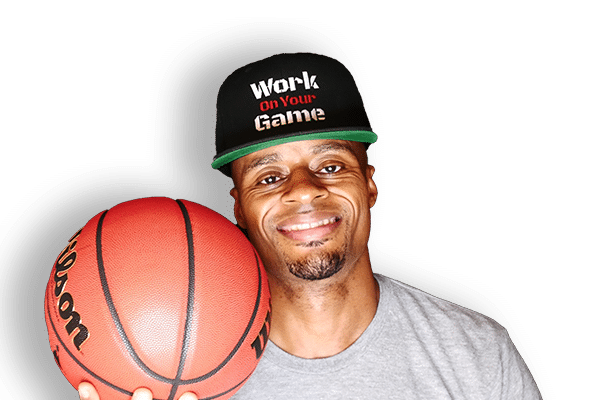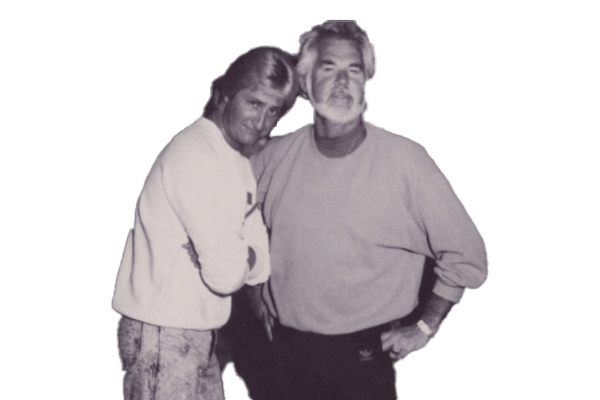There is an enormous misconception in just about every article or book on influence that exists today.
Browse through a couple and you’ll quickly notice that they overwhelmingly focus on teaching you the inner workings of the human mind.
The promise is clear—learn what makes people tick and you can convince them to do your bidding.
Feel a little queasy? Yeah, me too.
But the fact that it seems manipulative isn’t the only thing wrong with this typical approach to gaining influence—it’s also focused on the wrong person.
If you want to improve your influencing skills, focusing on how other people act will only get you so far. The real change begins when you start focusing on your own behavior.
Specifically, there are four foundational influencing skills that are 100% in your control. Focus on these, and your influence will grow much faster than it ever would from focusing on cheap psychological tricks and tactics.
In my experience working with multimillion dollar companies, these four influencing skills are the true difference makers.
Influencing Skill #1: Being someone others want to be around
I know what you’re thinking…
“Yeah, yeah…I know that already.”
That’s the usual response I get when expressing the importance of being someone others want to be around.
But here’s the danger—you can be completely aware of this trait’s importance…yet still fail at it miserably.
If you really want to know whether or not people actually enjoy being around you, there’s only one way to find out—ask them.
You don’t have to make this complicated. It can be as simple as saying, “What does it feel like to be around me? Do I ever do anything that makes you feel uneasy or negative?”
Ask people you trust and—don’t simply give them permission—beg them to be honest. You’ll often be shocked at the answers you get. I know I was…
When I first started making the effort to ask this question several years ago, an overwhelming number of people all said the same thing:
“Sometimes, you have a look on your face that makes me wonder why you’re so mad.”
And by “sometimes” they meant almost ALL the time.
This wasn’t easy to hear, but it was tremendously helpful.
The truth is, I wasn’t mad—I just had that look on my face.
When someone finally called it to my attention, I decided to make myself smile around others. The effect this little change produced was instantly noticeable.
People began to open up around me.
They listened to me with interest.
In short, people simply enjoyed being around me a lot more than they had previously.
This is the true foundation of influence—it doesn’t matter if you know all the psychological methods in the world, if you aren’t someone people want to be around, you will not be able to lead them anywhere.

So, how do you become someone others want to be around? Smiling is a good start, but there are three specific qualities you should start working on if you want to see a drastic improvement in your influencing skills:
Positivity
You and I know people who are always down in the dumps. No matter the situation, they’re unable to see the glass as half-full.
How much do you enjoy being around them?
Chances are, you avoid them at all costs.
The exact opposite is true about positive people.
When you talk to someone with a positive mindset, you wish the conversation would never end—you think of new subjects to bring up just so you can keep talking.
They are people others love being around.
Because of this, they naturally get more opportunities, have more connections, and have greater influence.
But there’s a right and wrong way to be positive.
The real power of positivity lies in the balance between being realistic—knowing what IS—and in understanding that possibilities for greater results exist. You are simply in the process of identifying those possibilities.
Respect
When the Atlanta Falcons made it to Super Bowl 51, team owner Arthur Blank did something unexpected…
He bought a ticket for every single employee in the organization—from his right-hand man to the janitors—and paid for their accommodations.
Can you imagine how those janitors felt after hearing the news?
Think about the bosses you’ve had throughout the course of your life. If they had done something like Mr. Blank, how would that have changed your perception of them?
Showing respect like this to everyone, despite who they are, where they’ve been, and what they do for a living, will make a lasting impact on everyone you meet.
People will look at you as a friend—someone who understands them and isn’t too good to talk to them.
Respect is an overlooked superpower that leads to greater influence.
Engaging
The ability to engage others in conversation is key to being someone others want to be around.
Masters of the art of conversation are able to communicate clearly and seamlessly with anyone—while treating them like they’re the only person in the room.
If you’ve ever met someone like this, you know how good they make you feel.
They’re incredibly interested in you, your family, your story, and can carry a riveting conversation for hours.
You can learn to do the same thing, even if you don’t consider yourself an extrovert, and drastically increase your influence.

Practicing these three things will take your conversational skills to new heights:
1. Actively listen
Being a good conversationalist starts with not saying a word.
When you focus all your energy on the person talking and treat them like they’re the only person in the room, you’ll not only hear what they’re saying…you’ll also:
- Hear everything they’re not saying (which is sometimes even more important)
- Make them feel heard—the underrated side effect of actively listening. You can give someone else the gift of acknowledgement, simply by giving them your full attention.
2. Ask Questions
This is a great way to learn about other people and find new areas to talk about.
Instead of looking for opportunities to make an interesting point or talk about yourself, cultivate a sense of extreme interest and curiosity in every conversation you have. It doesn’t matter who you’re with, for the next handful of minutes that person should be the most interesting thing in the world to you.
If you need to get the ball rolling, ask about their family. Make it your mission to find out what ignites their passion and makes them come alive. Dig deep—you’ll be amazed at what you discover.
3. Look for a way to give them a “standing ovation”
Most people will go their entire life without ever receiving a standing ovation—literally or figuratively.
Everyone wants to be recognized. Everyone wants to know they’re doing something right. Everyone wants to hear, “Well done.”
We’re so quick to catch people in the act of doing something wrong, yet we rarely take the time to acknowledge someone in the act of doing something right.
When you’re in a conversation with someone, look for something—even if it seems little—and go out of your way to recognize that person for it.
Influencing Skill #2: Understanding the components of change
The amount of influence you have is directly proportional to your ability to lead people to make positive changes.
Unfortunately, almost everything we’re conditioned to believe about change is fundamentally wrong. Specifically, there are 3 widely accepted beliefs about change that are absolute myths.
Myth #1: “It takes time to change.”
Myth #2: “You have to want to change.”
Myth #3: “Change can only happen when you hit rock bottom.”
Each one of these are wrong.
True and lasting change can happen anytime, in an instant, whether you want it to or not…as long as two things happen:
1. The person understands “what’s in it for them”
If someone is going to change, there has to be a very compelling answer when they ask themselves, “What’s in it for me?”
This doesn’t make them greedy or selfish—it makes them human. It’s our nature to act only when we’re absolutely sure that doing so is in our best interest.
When presented with something that will require them to change, people instantly think:
- What about my family?
- What about my career?
- What about me?
And we often think these things without even realizing we’re thinking them! It’s an automatic, subconscious response.
When trying to influence change, it’s critical that you make communicating “what’s in it for me” your top priority.
Your next priority? Showing proof.
2. The person has proof beyond a reasonable doubt that they should change
I’m not talking about mathematical proof—I’m talking about the kind of proof present when someone is presented with something that makes perfect sense. They hear it and things just click.
Maybe they’ve heard it before, even several times, but this time it was explained in a different way—and from that moment on, they never thought the same way again.
When proof beyond a reasonable doubt collides with “what’s in it for me,” people change immediately—and it lasts.

How understanding change will expand your influence
When you understand change, you can initiate it in your own life and inspire it in the lives of others.
You’ll have a better chance to add new clients or advance in your career.
You’ll be able to influence your children in a way that helps them continue making great decisions long after they’ve left your household.
You’ll be able to help a friend who has gone down a destructive path get back on the right one.
Understanding this truth will help you help others.
Influencing Skill #3: Harnessing the power of storytelling
I am an author and a speaker, but the essence of my work is storytelling. That’s how I grew up.
My dad was a storyteller. When I got into trouble, I was told a story. When I was being taught something, I was told a story. Even in school, my favorite teachers were storytellers. I’d remember facts right up until it was time to take the test, but if I was taught the facts through a story, I’d remember the story forever.
Great stories move people. Great stories take us on a journey, allowing us to feel differently—and those feelings can change our perspective, often leading us to take action.
Stories connect in a way regular information does not.
Our brains, research continues to show, are wired to understand and retain stories, not facts and logic. While logic activates the rational left brain, stories trigger the imaginative properties of the right brain.
In other words, if you understand how to tell a story, you can dramatically increase your influence.
It may sound intimidating, but you don’t have to be a skilled writer or speaker to become a good storyteller. You only need to focus on three things:
1. You must read stories
This isn’t exactly groundbreaking, but it’s true—until you make reading a habit (both fiction and nonfiction) you will greatly limit your storytelling ability.
Reading well-told stories will fire your imagination. You will experience the stories as if they are happening to you.
As you read, pay attention to what moves you. When you feel yourself eagerly turning the page, ask why. What is the author doing to keep your attention? Over time, you will notice patterns that you can apply to the stories unfolding in your own life.
2. You must identify and own your personal story
When I learned how to harness my own story as a speaker, author, and consultant, my entire business changed. I was no longer simply entertaining people—I was inspiring them to make real changes in their behavior.
Whether you’re on stage in front of an audience or meeting someone for coffee, you can do the same. But it all starts with identifying the key stories in your life to which people will be able to relate.
To do that, you need to look for emotion.
My story of overcoming homelessness allowed people to put their current challenges and circumstances in perspective. The lesson was clear—even when it looks like the world is ending for you, it’s not. I was able to use my story to illustrate principles and lead people to understanding and action by connecting with them emotionally.
Until someone is moved emotionally, a story rarely sticks with them.
How many times in your life have you heard something in a business presentation that immediately went in one ear and out the other? Compare that to anytime you’ve watched a movie that moved you emotionally. In some cases, you probably weren’t able to stop thinking about it for weeks.
Of course, stories that move us are stories that show some sort of problem or challenge that was overcome. That’s why you should not shy away from challenging memories when thinking about your own story. Instead, focus on things like:
- Failures
- Mistakes
- Shortcomings
- Tragedies
The way you’ve responded to those things throughout your life is often what defines you as a leader and person of influence.
3. You must connect your story to your audience
This may sound harsh, but if people have never heard of you, they simply won’t care about your story…unless you explain what’s in it for them. And then prove it beyond a reasonable doubt.
Can your story help others who are hurting? Does it apply to anyone else’s life but yours?
To ensure the answer to those questions is “yes,” the following questions should shape the way you tell your story:
- Who is your audience?
- What do they look like?
- What do they need?
- What do they want?
- What problem can you solve for them?
- What hope can you give to them?
- What principles can you share through your narrative that will transform their lives?
Before you go into any situation in which you want to have influence, you must ask these questions about everyone involved. Armed with the answers, you can then identify key stories that will connect with them in ways an ordinary conversation or presentation cannot.
What if your personal story doesn’t fit? Then expand your thinking to find one that does.
No project I have ever done in my life has affected me so profoundly as the research I did years ago on The Butterfly Effect.
Working with the United States Air Force, I was charged with finding “proof of the value of an individual life.” At that time, the military had discovered that suicide was more prevalent within their ranks than within the civilian population as a whole.
The answer for which I was searching was way beyond encouragement or motivation. I had to find a way to convince someone, beyond a shadow of a doubt, that his life mattered immeasurably.
Beyond that, I wondered… Is it possible to prove that every single action we take also matters? Forever?
The notion seemed preposterous (even to me) but I set forth on what became the most important search of my life.
I began with a detailed investigation into a doctoral thesis written in 1963 by Edward Lorenz. In it, he theorized that a butterfly might flap its wings, moving molecules of air into motion that in turn moved other molecules of air, eventually becoming able to shift weather patterns on the other side of the world.
Of course, in 1963, the theory was ridiculous. And the New York Academy of Science said so.
It wasn’t until the mid ‘90s when physicists, working in concert around the world, authenticated the Lorenz hypothesis. Commonly called The Butterfly Effect, it has now been granted the status of a law. Lorenz’s broad strokes on the evolution of chaos theory have now been named The Law of Sensitive Dependence Upon Initial Conditions.
With that as a firm starting point, I set out to prove the same concept could apply to our lives as human beings. That every action we take—or don’t take—creates a Butterfly Effect that can impact the entire world forever. And to prove that, I searched for stories.

I stumbled upon the story of Joshua Chamberlain and his improbable charge at Gettysburg—a single action that would ultimately determine the fate of the entire nation for centuries to come.
I discovered connections between Norman Borlaug, a man credited with saving over two billion people from famine, and a little boy who had been mentored by George Washington Carver.
I uncovered stories about Carver himself, his childhood and the incredible link a simple farmer’s action provided that made possible all of Norman Borlaug’s work—a hundred years into the future!
All this knowledge—this proof—affected me deeply. I began to be more effective in my daily life as I understood just how important my actions were and how incredibly valuable every person is with whom I come in contact.
I use this proof and these stories almost every time I speak and have never ceased to be amazed at their impact on people.
No one has a monopoly on great stories. There is an infinite number of them out there, simply waiting to be discovered. Once harnessed, they can illuminate lessons, insights, and principles that will inspire and delight those you are seeking to influence.
So start with your own stories, but don’t limit yourself to them exclusively.
Influencing Skill #4: Learning how to network the right way
Most people think networking is going to a Chamber of Commerce meeting and handing out business cards.
While this might make you feel like you’re networking, it ultimately does little to increase your influence.
The most effective way to network is often overlooked—mainly because it’s uncomfortable, it requires more than just handing out a business card, and it’s, well, a little different than what most are used to.
How to Network the Right Way
1. Know what you’re looking for
If you go to a networking event without a plan beyond just being there to network, you’ll drift around and ultimately leave dissatisfied.
Before you even schedule it on your calendar, you should ask yourself:
- What do I want to learn?
- Do I want to meet a leader in the industry? If so, who?
- Who might be there that I’d want to get as a client?
- Who might be there that I’d want to connect and build a relationship with?
- Who might be there that I know I can help?
Once you know what you want, formulate a plan on how to get it. Figure out where you’ll go, who you’ll talk to, and in what order.
2. Do some research
If you know someone you’d like to meet will be at an event you’re going to, do some research on them beforehand
A friend of mine once called me and asked if I knew someone he was about to meet with. I didn’t, but I did some research on the person and called my friend back within about 30 minutes.
I told him several key pieces of information about this person from what I found on Facebook.
My buddy now had several key areas to connect with this person at the event they were attending.
If you find ways to connect with someone you want to meet, you’ll have a greater chance of building a friendship with them (or landing them as a client).
3. Build friendships
Truth is: handing someone a business card doesn’t mean anything. You didn’t become friends with them and you didn’t land them as a client just because they have your card.

The best way to network is to genuinely try to build friendships.
Focus on building relationships rather than expanding your list of clients or contacts. Maybe one day down the road, this person will help you. Today, however, they’re a new friend.
Use These Influencing Skills to Inspire Positive Change
These four influencing skills form the foundation you need in order to lead others to change.
Take steps each day to fold them into your life and keep them at the forefront of your thinking.
When you put yourself in a position to be a positive influence on others, amazing things can happen:
You could be the catalyst that helps people change their lives.
You could influence the way people think and help them achieve extraordinary results.
You could attract more opportunities and see your career or business grow exponentially.
This power is within your reach—will you grab it?





